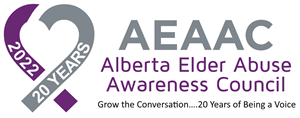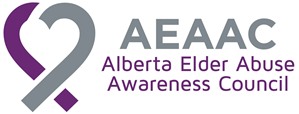Any action or inaction by a person(s) in a trusting relationship that causes harm and distress to an older adult.
Types of Elder Abuse
Elder abuse can take several forms, often with more than one type of abuse occurring at the same time for individuals. National and provincial statistics indicate that the two most identified and reported types of elder abuse are financial and psychological.
Financial Abuse
This is "the misuse of an older person's funds or property through fraud, trickery, theft or force." It can include, but is not limited to:
- the misuse of money or property
- convincing an older person to buy a product or give away money
- stealing money or possessions
- misusing bank or credit cards
- misusing joint banking accounts
- forging a signature on pension cheques or legal documents
- misusing a power of attorney
Psychological or Emotional Abuse
This may take the form of verbal aggression, humiliation, isolation, intimidation, threats and inappropriate control of activities. In all cases, it diminishes the identity and self-worth of older people. It can also provoke intense fear, anxiety or debilitating stress.
It can include, but is not limited to:
- removal of decision-making power while the person is competent
- withholding affection for manipulative purposes
- refusing access to grandchildren
- denying privacy in institutions
- forcing older people to do degrading things
- controlling activities
- treating them like children
- attacking their self-esteem
- intentionally frightening them
Physical Abuse
Physical abuse is the use of physical force causing discomfort which may or may not result in bodily injury, physical pain, or impairment. Older persons who are subjected to rough handling or mistreatment are the victims of physical abuse.
It can include, but is not limited to:
- slapping
- shaking
- pushing
- kicking
- punching
- striking with an object or weapon
- deliberate exposure to severe weather
- unnecessary physical restraint
- forced confinement
- failure to provide adequate health care
Sexual Abuse
All unwanted forms of sexual activity, behaviour, assault or harassment to older persons is elder sexual abuse.
It can include, but is not limited to:
- verbal or suggestive behavior
- fondling
- unwanted sexual intercourse
- lack of personal privacy
- being forced to commit degrading acts
- unnecessary help with dressing/hygiene
Neglect
This is the intentional or unintentional failure to provide for the needs of someone. Neglect can be active (intentional) or passive (unintentional) and has the effect of failing to provide older persons with basic necessities or care.
It can include, but is not limited to:
- failure to provide a safe, warm and comfortable place to live
- denial of social contacts and/or interaction
- failure to provide personal hygiene
- failure to provide proper food or clean clothing
- failure to provide aids for daily living, (hearing aids, walkers, canes, wheelchairs, etc.)
- failure to prevent physical harm
- abandonment or desertion
Self-neglect, while not technically considered abuse, is also a significant concern. It involves cases whereby, older adults, by choice or ignorance, live in ways that disregard their health or safety needs and can in some cases pose a hazard to others.
Medication Abuse
This is the misuse of an older person's medications and prescriptions.
It can include, but is not limited to:
- withholding medication
- overmedicating
- sedation
- not complying with prescriptions refills
Source: Abuse and Neglect of Older Adults - Resource and Training Kit for Service Providers, Health Canada 1994





